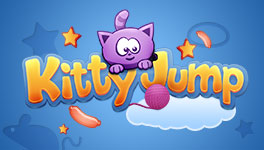Hyper Rift Review
Price: FREE
Version Reviewed: 1.0.1
App Reviewed on: iPhone 5
Graphics / Sound Rating: 




Gameplay Rating: 




Playtime Rating: 




Re-use / Replay Value Rating: 




Overall Rating: 




Hyper Rift is a choose-your-own-adventure style game that plays like an interactive story. Throughout, players will find themselves reading large sections of text, making narrative decisions, and solving complicated puzzles, all in a quest to figure out the mystery of a derelict spacecraft called the Mi’raj. Despite being a pretty cliched setup, Hyper Rift establishes a pretty fantastic sense of mystique that has the power to drive players through the somewhat inconsistent writing, dense puzzle solving sequences, and clunky controls.
The story of Hyper Rift begins with players taking the role of a character that has just woken up on a spacecraft. Much like the players themselves, the main character has no knowledge of the ship or how they got there. The only thing that is certain is that things don’t seem right, as the ship is largely abandoned and parts of it aren’t fully operational. Although it does move in some predictable ways narratively, I found that much of Hyper Rift‘s narrative turns were pretty unpredictable and interesting. The only notable problem I have with the storytelling is it’s not the best structured adventure as it sports some out-of-sequence text on occasion, but the developer seems dedicated to eliminating these holes through updates.
To steer the action, players can tap one of five buttons at the bottom of the screen to assess their current status, read the current description of what is happening around them, pull up options of things to investigate, move to another room, or pull up the menu. While most of the screen will be covered with text, there are also background floor plans that illustrate the layout of the ship and the rooms being explored.

 While exploring, players will be gathering items, speaking with other characters, and solving puzzles – some of which will involve math, scientific knowledge, memorization, and logic. If this sounds kind of intimidating, that’s because it is. Although the game embeds ways to figure out all of its puzzles into its narrative, Hyper Rift is unapologetically challenging when it comes to puzzle-solving.
While exploring, players will be gathering items, speaking with other characters, and solving puzzles – some of which will involve math, scientific knowledge, memorization, and logic. If this sounds kind of intimidating, that’s because it is. Although the game embeds ways to figure out all of its puzzles into its narrative, Hyper Rift is unapologetically challenging when it comes to puzzle-solving.
In solving these puzzles, the main problem with Hyper Rift usually rears its ugly head: it definitely does not have a perfect control scheme. Some actions seem to take a few more taps than needed and investigate-able items remain static on the screen so that players have to keep track of what is worthwhile to click on and what isn’t, which can be frustrating. Luckily things move at a pace that allows for these controls to not impact performance. Even during action sequences, players are reading text and making decisions with no time limit pressuring them whatsoever.
As a gamebook, Hyper Rift is hard to be too unhappy with. It’s certainly not perfect, but it makes up for its issues by being challenging and interesting in ways that most other free-to-play story games aren’t. Hyper Rift is definitely worth picking up for anyone interested in interactive fiction adventures.





































